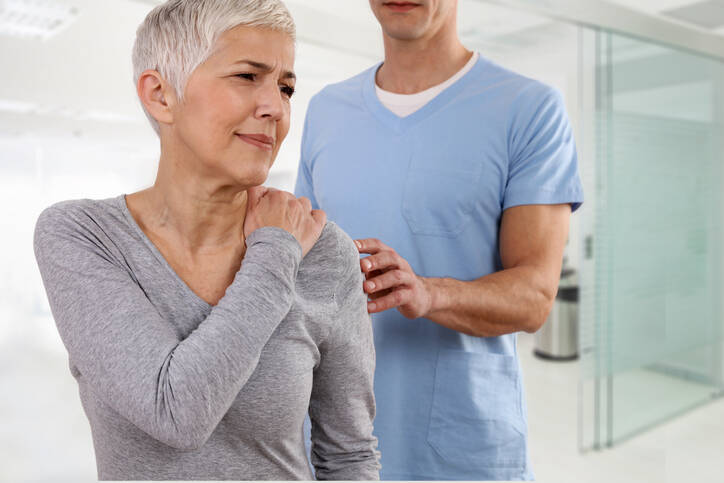- Photoessay of the cutaneous manifestations of the idiopathic inflammatory myopathies
- Strauss KW, Gonzalez-Buritica H, Khamashta MA, Hughes GR (July 1989). "Polymyositis-dermatomyositis: a clinical review". Postgraduate Medical Journal. 65 (765): 437–43. doi:10.1136/pgmj.65.765.437. PMC 2429417. PMID 2690042.
- Zhang L, Wang GC, Ma L, Zu N (November 2012). "Cardiac involvement in adult polymyositis or dermatomyositis: a systematic review". Clinical Cardiology. 35 (11): 686–91. doi:10.1002/clc.22026. PMC 6652370. PMID 22847365.
- Xin Lu; Hanbo Yang; Xiaoming Shu; Fang Chen; Yinli Zhang; Sigong Zhang; Qinglin Peng; Xiaolan Tian; Guochun Wang (2014). "Factors Predicting Malignancy in Patients with Polymyositis and Dermatomyositis: A Systematic Review and Meta-Analysis". PLOS ONE. 9 (4): e94128. Bibcode:2014PLoSO...994128L. doi:10.1371/journal.pone.0094128. PMC 3979740. PMID 24713868.
- Hill, C.L.; Zhang, Y.; Sigurgeirsson, B.; Pukkala, E.; Mellemkjaer, L.; Airio, A.; Evans, S.R.; Felson, D.T. (January 2001). "Frequency of specific cancer types in dermatomyositis and polymyositis: a population-based study". Lancet. 357 (9250): 96–100. doi:10.1016/S0140-6736(00)03540-6. PMID 11197446. S2CID 35258253. Retrieved 20 April 2015.
- Fathi M, Dastmalchi M, Rasmussen E, Lundberg IE, Tornling G (March 2004). "Interstitial lung disease, a common manifestation of newly diagnosed polymyositis and dermatomyositis". Annals of the Rheumatic Diseases. 63 (3): 297–301. doi:10.1136/ard.2003.006122. PMC 1754925. PMID 14962966.
- "Dermatomyositis". GARD. 2017. Archived from the original on 5 July 2017. Retrieved 13 July 2017.
- Callen, Jeffrey P.; Wortmann, Robert L. (1 September 2006). "Dermatomyositis". Clinics in Dermatology. 24 (5): 363–373. doi:10.1016/j.clindermatol.2006.07.001. ISSN 0738-081X. PMID 16966018.
- "Dermatomyositis". NORD (National Organization for Rare Disorders). 2015. Archived from the original on 19 February 2017. Retrieved 13 July 2017.
- Dourmishev, Lyubomir A.; Dourmishev, Assen Lyubenov (2009). Dermatomyositis: Advances in Recognition, Understanding and Management. Springer Science & Business Media. p. 5. ISBN 9783540793137. Archived from the original on 8 September 2017.
- Callen, Jeffrey P. (1 June 2010). "Cutaneous manifestations of dermatomyositis and their management". Current Rheumatology Reports. 12 (3): 192–197. doi:10.1007/s11926-010-0100-7. ISSN 1534-6307. PMID 20425525. S2CID 29083422.
- mayoclinic.org - Polymyositis
Polymyositis and Dermatomyositis: Causes, Symptoms And Treatment

Photo source: Getty images
Most common symptoms
- Malaise
- Abdominal Pain
- Joint Pain
- Limb pain
- Muscle Pain
- Spirituality
- Fever
- Rash
- Swallowing disorders
- Buds
- Dry cough
- Muscle weakness
- Fatigue
- Redness of the eyelid
Show more symptoms ᐯ
Treatment of polymyositis and dermatomyositis: medications and lifestyle changes
Show morePolymyositis and Dermatomyositis is treated by
Other names
myositis, idiopathic myositis, idiopathic inflammatory myositis










